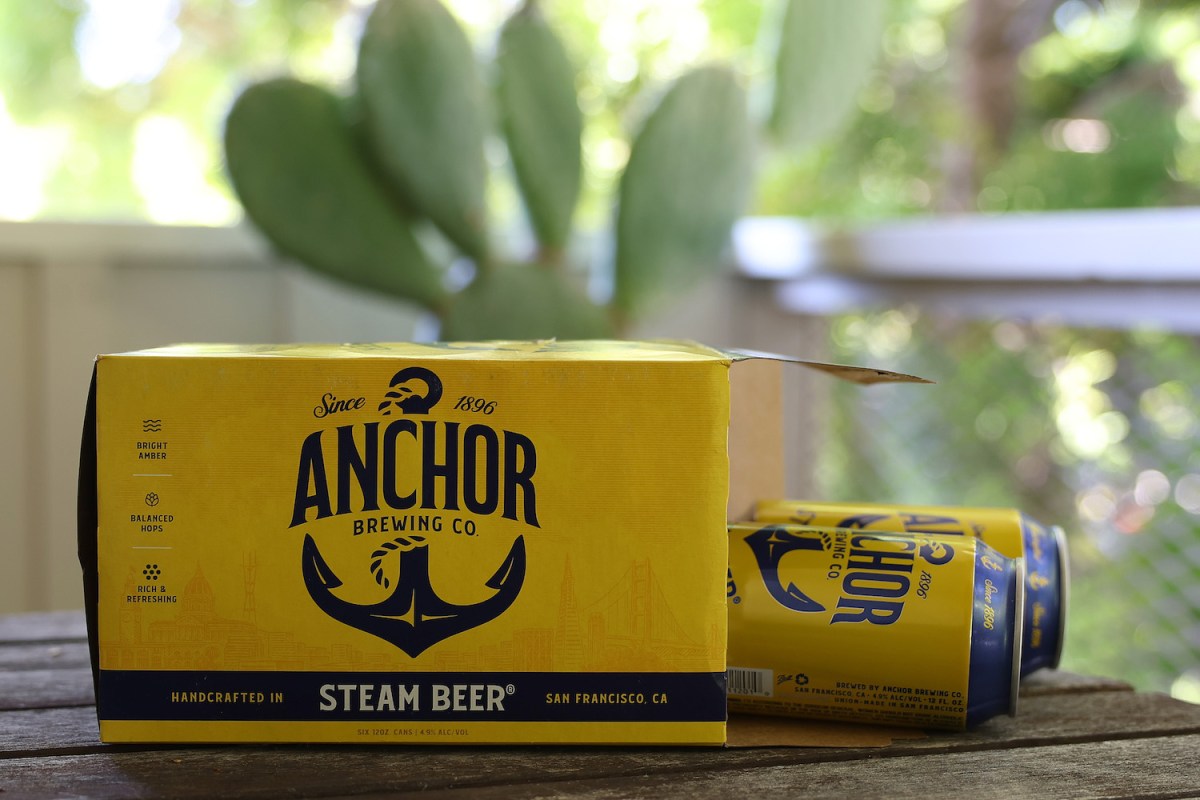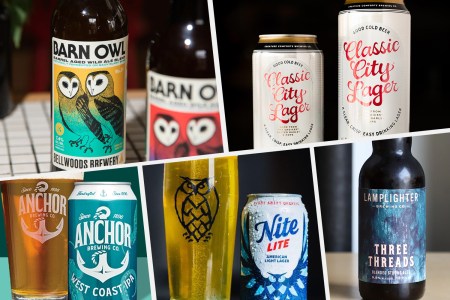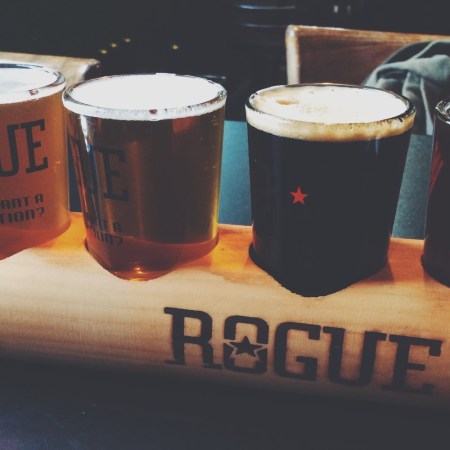Ask any craft beer fan to list the most iconic breweries in the country and you’re likely to hear a few common ones: Sierra Nevada, Allagash and Bell’s, to name a few. And then there’s San Francisco’s historic Anchor Brewing Company. It’s among the most notable, particularly for Californians, partly because of its beloved beers like the famous Steam Beer and Christmas Ale. Anchor has been a mainstay, not just for good beer, but because it was one of the most historic American breweries still operating, and it helped define American beer as we know it.
But that all appears to be over. On July 12, Anchor and its owner, Sapporo, announced the brewery is closing and gave its employees a 60-day notice. The operation is being liquidated to pay off creditors rather than go through bankruptcy. The announcement was made after a drip of signs of what was to come for the 127-year-old brewery.
In June, distribution was cut to California only. At the same time, Anchor Brewing’s 49-year-old Christmas Ale was cut entirely. Management blamed the changes on the usual suspects of a shrinking business: inflation, high competition and the costs of production. Also following the shutdown playbook, Anchor Brewing spokesperson Sam Singer said, according SFGate, that it was a “difficult decision” made after the culmination of “many months of careful evaluation.” Notably, ownership has looked for a buyer for a year. The San Francisco taproom, which opened in 2017, will stay open to sell the rest of the brewery’s inventory (including a small amount of the 2023 Christmas Ale), and the brewery will package and distribute what’s already been made until the end of July.
I’ve been covering beer and the beer industry in some capacity since I started writing for a living in 2015. I’ve seen the ebbs and flows and learned the danger of getting too enamored by a single brewery that could close or be bought up at a moment’s notice. Yet, most of the backlash when big alcohol conglomerates started scooping up craft breweries in the 2010s was about selling out. There was a lot less chatter, however, about those owners shutting places down like some sort of venture capitalist cutting a company until it dies — especially one that helped Americans understand what “craft beer” even is.
Anchor billed itself as the country’s first craft brewery. It was founded in 1896 when the City By The Bay was flush with people and (some) riches from the California Gold Rush. This long history wasn’t all smooth sailing. The brewery was nearly bankrupt when Fritz Maytag purchased it in 1965 and turned it around with bigger flavors, a local connection and traditional ingredients and methods. It was a time when big beer was even more dominant, and Maytag solidified Anchor’s position as an early craft beer darling that helped define the category.
The claim of “first” craft brewery could be disputed by other once-upstarts that have survived acquisitions, sales and hard economic times (hello, Yuengling), but there’s no denying that Anchor’s revival in the ‘60s and ‘70s was crucial to getting to where American beer is at today.
Japanese beer conglomerate Sapporo purchased Anchor Brewing in 2017 for $85 million. Things initially looked up when the new taproom opened in the same year —the brand could now capitalize on the local market and the success of hyper-local brewpubs, as well as lean into the reputation of Anchor Steam as San Francisco’s beer. The city even had an annual “Steam Week” that then-mayor Ed Lee started in 2015. But the environment at Anchor soured the years after the acquisition with concerns that the brewery wasn’t getting the attention and investment it needed to thrive.
Craft Beer Is Doing the Unthinkable: Mimicking Macro Beer
From the rise of the light lager to retro packaging, microbreweries are pulling inspiration from Big BeerEmployees unionized in 2019 in part as a way to have more collective say and power regarding Anchor’s identity in the larger company’s portfolio. Still, sales under Sapporo ownership decreased every year except for 2021, according to Brewbound. The story isn’t unique to Anchor. Beer overall has had a hard couple of years since the start of the pandemic, and the heyday of craft beer is years past its high point. According to sales data obtained by CNN, craft beer sales are down 4% year-to-date by value, and down 7% by volume.
2022 was a “make-or-break year for many breweries,” senior economist for the Brewers Association Bart Watson told CNN. The pandemic (both its effect on the supply chain and on the ability for people to safely get out for a beer), wheat and barley supply issues from Russia’s invasion of Ukraine, aluminum and carbon dioxide shortages, and climbing costs have all taken their toll. According to the Brewers Association, last year saw 143 brewpubs close and 173 open. While that means there was still growth, that’s compared to 137 closings and 403 openings in 2019.
But all of that doesn’t make losing Anchor any easier on a personal level. To see such an established and renowned brewery — one that’s so ingrained in San Francisco and craft beer history that its signature beer style had its own week, no less — be sold for scraps is jarring. Thought, there is a chance that the last chapter for the brewery is yet to be written. SFGate notes that a buyer could still come up during the liquidation process, despite the long run of no one stepping forward to foot the bill.
Regardless of what happens, the liquidation news is one that both the industry and craft beer lovers should read as a sign of what could happen to even the most cherished brands that have been bought up in the past decade. That includes Stone Brewing Company, which Sapporo bought in 2022 in spite of the brewery owners pledging to “never, ever, sell out to the man.” At the time, Stone’s purchase raised questions about Anchor’s position in Sapporo’s portfolio. Now it raises questions about what other cutbacks in Sapporo’s portfolio could come next in this post-craft-beer-boom era. If a brand like Anchor can be shuttered, it changes the perspective for owners who might take a buyout.
Nothing lasts forever. Sure, many drinkers can find equally delicious beers at their local brewery now. Recipes can live on. Hell, breweries are making beer from George Washington’s recipes, and Anchor’s steam beer isn’t unreplicable. That said, any reproductions won’t carry the full weight of the history that Anchor has not only seen, but made.
Craft beer would have been different if it weren’t for Maytag bringing Anchor, and craft brewing in general, back into the conversation. For one, there’s a good chance the 1800s Old West style of steam beer would have been a footnote in history rather than the iconic American style that Anchor came to define. It’s a history best enjoyed beer bottle in hand, and just doesn’t land the same when that bottle is no longer around.
Every Thursday, our resident experts see to it that you’re up to date on the latest from the world of drinks. Trend reports, bottle reviews, cocktail recipes and more. Sign up for THE SPILL now.

























